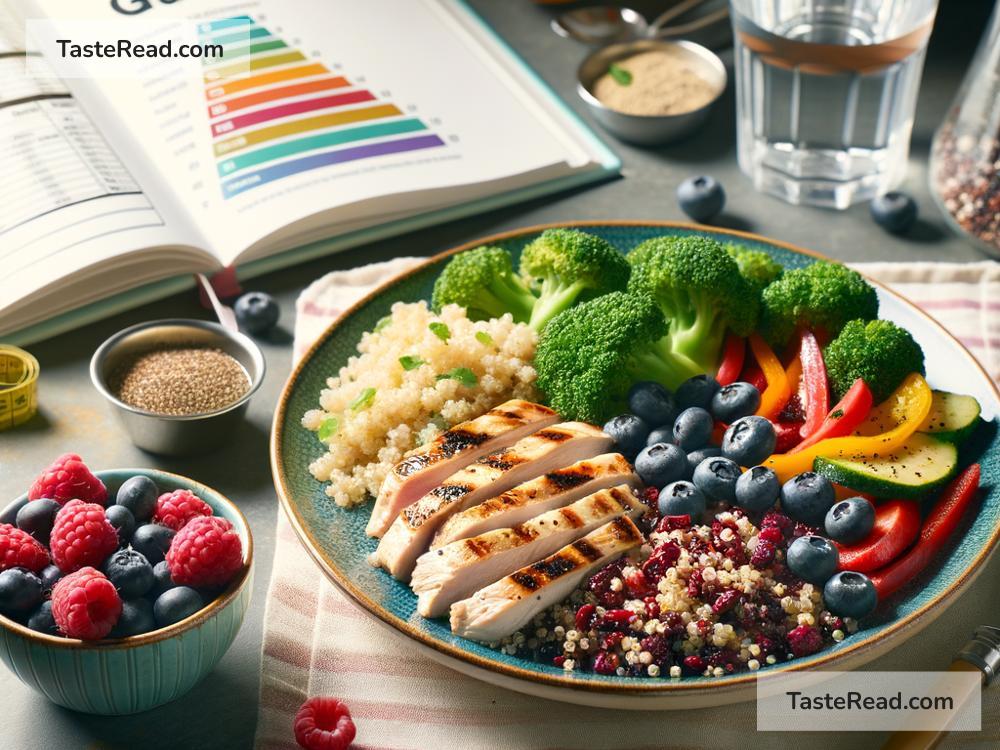How to Plan Balanced Meals for Weight Management
Maintaining a healthy weight is all about balance. Whether you’re trying to lose weight, gain weight, or simply stay where you are, the key lies in eating meals that nourish your body without overloading it. The good news is that planning balanced meals for weight management doesn’t have to feel complicated or intimidating—you just need a strategy that works for you.
In this article, we’ll break down how to plan balanced meals in a simple, approachable way. By the end, you’ll feel confident that you can fuel your body while keeping your weight goals in mind. Let’s get started!
What Does “Balanced” Mean?
A balanced meal is one that includes a combination of nutrients necessary for your body to function properly. These nutrients mainly come from four food groups:
- Proteins – These help build and maintain your muscles, tissues, and cells. They also keep you feeling full longer.
-
Examples: chicken, fish, eggs, tofu, beans, lentils, and Greek yogurt.
-
Carbohydrates – These provide energy for your body and brain. Focus on choosing complex carbs, which are absorbed more slowly and keep you full longer.
-
Examples: whole grains (like brown rice, whole wheat bread), oats, quinoa, and starchy vegetables (like sweet potatoes).
-
Fats – Healthy fats are essential for your body, supporting brain function and hormone production. They also help absorb nutrients.
-
Examples: avocados, nuts, seeds, olive oil, and fatty fish like salmon.
-
Vitamins and Minerals – Found in fruits, vegetables, and whole foods, these nutrients keep your immune system strong and your body functioning efficiently.
- Examples: spinach, broccoli, berries, citrus fruits, and peppers.
The key is to combine these food groups in the right proportions while keeping your portion sizes in check.
Steps to Plan Balanced Meals
Here’s a step-by-step guide to help you create meals that support weight management:
1. Start with a Plate Method
A useful visual tool for balanced meals is the “plate method.” Imagine your plate divided into three sections:
– Half of your plate should be filled with non-starchy vegetables like leafy greens, broccoli, carrots, and zucchini.
– One-quarter of your plate should be your protein source, like grilled chicken, baked salmon, or a plant-based protein like tofu.
– One-quarter of your plate should be your carbohydrate source, like brown rice, quinoa, or sweet potatoes.
Consider adding a small serving of healthy fat, like a drizzle of olive oil or a sprinkling of nuts, to complete your meal.
2. Keep Portion Sizes in Check
Even when eating healthy foods, portion control matters. Eating too much—regardless of how nutritious the food is—can lead to weight gain. Here are simple tricks to estimate portions:
– Protein: About the size of your palm or a deck of cards.
– Carbs: About the size of your fist.
– Vegetables: Unlimited! Fill most of your plate with colorful veggies.
– Fats: About the size of your thumb (e.g., a tablespoon of olive oil or peanut butter).
3. Focus on Whole Foods
Choose whole, minimally processed foods most of the time. For example:
– Swap white bread for whole-grain bread.
– Choose fresh fruits instead of sugary snacks.
– Opt for homemade meals over pre-packaged, frozen dinners.
Whole foods are generally lower in calories and higher in nutrients, making them great for weight management.
4. Plan Ahead
Meal planning is your best friend when managing weight. If you plan your meals in advance, you’re less likely to grab something unhealthy out of convenience. Spend some time at the beginning of the week preparing meals or writing down what you plan to eat each day. This will:
– Help you stick to your goals.
– Save time during busy days.
– Reduce the temptation to overeat or order takeout.
5. Include Snacks Wisely
Healthy snacks can prevent overeating during meals. Choose snacks that include one or two food groups, such as:
– A small handful of almonds (healthy fats and protein).
– Greek yogurt with fresh berries (protein and vitamins).
– Veggie sticks with hummus (fiber and healthy fat).
6. Limit Added Sugars and Empty Calories
Foods high in added sugars, like candy, soda, and baked goods, often provide little nutritional value while being high in calories. Limit these as much as possible and choose healthier substitutes, like fruit or dark chocolate.
7. Listen to Your Body
It’s important to tune in to your hunger and fullness cues. Eat when you’re hungry and stop when you’re satisfied—not stuffed. Slow down during meals to give your brain time to recognize when you’re full.
Sample Balanced Meal Ideas
Here are some examples of simple, balanced meals:
– Breakfast: Scrambled eggs with spinach and a slice of whole-grain toast, plus a handful of berries.
– Lunch: Grilled chicken salad with mixed greens, cherry tomatoes, avocado, and olive oil dressing.
– Dinner: Baked salmon with quinoa and roasted vegetables.
– Snack: Apple slices with peanut butter.
Final Thoughts
Planning balanced meals for weight management doesn’t mean restricting yourself or giving up all your favorite foods. It’s about finding a way to nourish your body with the right amounts of proteins, carbs, fats, and nutrients while being mindful of portion sizes and food choices.
Take it one step at a time—start with small changes like adding more vegetables to your meals or swapping sugary drinks for water. Over time, these habits will help you achieve your weight goals and lead to a healthier, happier life. Remember, balance is key!


